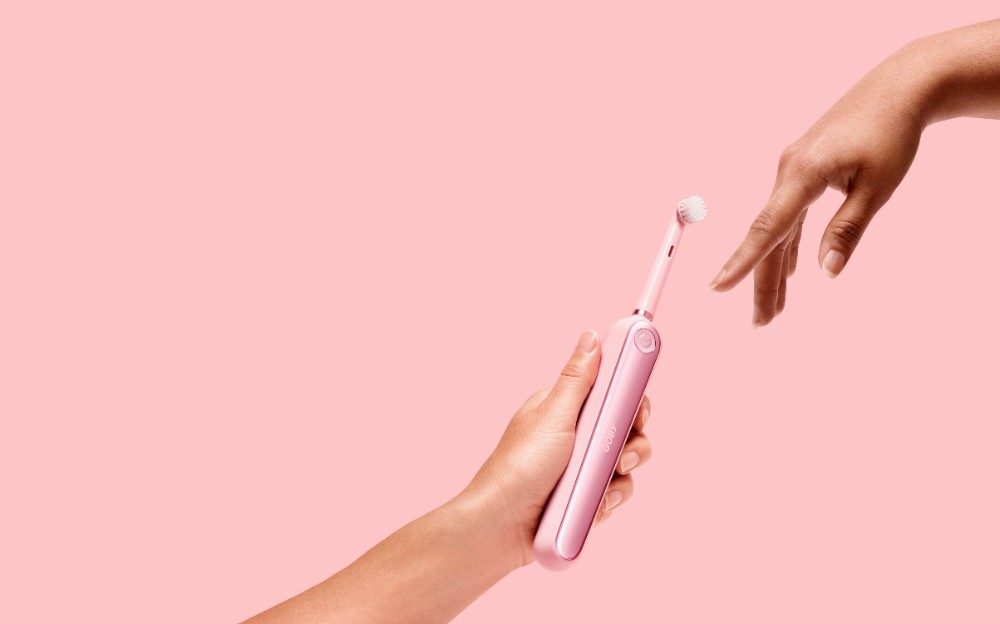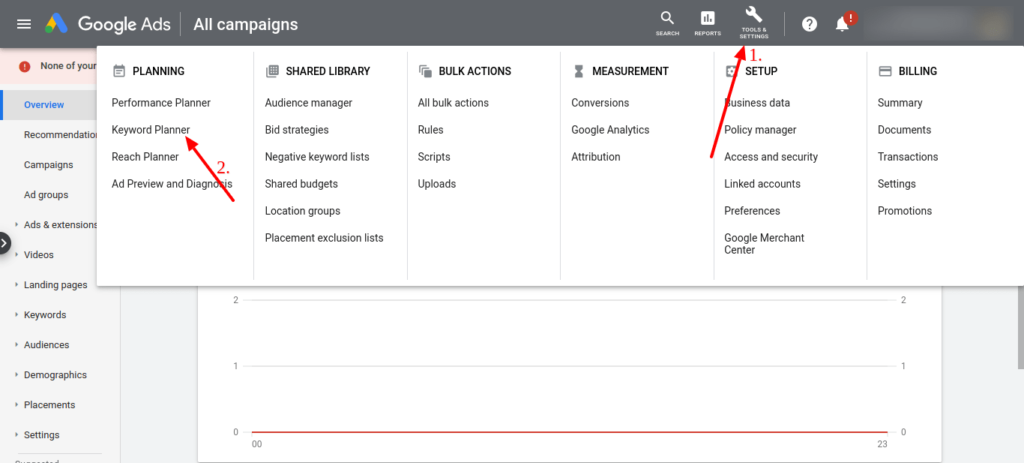The Difference Between Google and Facebook Ads For Dental Practitioners
I am an affiliate with links to an online retailer in this blog post. When you read what I have written about a particular product and click on that link and buy something from the retailer, I can earn a commission. Please note that I only recommend products that I truly believe in and use in my business. Please read my full disclaimer here

Whilst dental practices use referrals and word of mouth as a method for securing patients, the problems they face is that they are slow and unpredictable, making it difficult for dental practices to scale their patient intake and make more revenue.
This is why many dental practices use other methods of increasing their patient intake and in my previous blog post, How To Get More Patient Appointments as a Cosmetic Dentist, I outlined several methods for the modern dentists.
One of the recommended ways that I spoke about is through search engine marketing and Facebook marketing.
But which one is more effective in helping you get your desired results as a dentist – that is more patient enquiries and a better return on your investment?
In this blog post, I will outline the differences between Facebook Marketing and Google Marketing, how to use each one effectively for patient marketing and which one I recommend you should use for your practice goals.
Here’s What You Will Learn:
- What is Google Marketing
- What is Facebook Marketing
- Understanding the patient journey on both Google and Facebook
- How to use Google Ads for dentists
- How to use Facebook Ads for dentists
What is Google Marketing
Search engine optimisation – free
Google Marketing or search engine marketing is two-fold. There is the free method of search engine marketing, where you rely on the Google algorithm to help your website get found in the search engines when a prospect searches for a keyword.
That keyword might be “dentist near Leeds” or “invisalign treatment near Leeds”, for example.
So when a prospect goes to Google and types this keyword into the search box, Google may recommend your business. When that happens, you have tapped into the power of search engine optimisation, where your website has been adapted to respond to keywords that are searched for.
If your website does a good job at optimisation, then you have the possibility of appearing on the first page of Google.
However the ability for a new website to appear on the first page of Google, when that website has very little authority and age, is difficult. This is why, search engine optimisation experts will tell you that you should give your search engine marketing efforts at least 6 months to a year to see any real growth.
But if you don’t want to wait for such a long time to pass, before you start getting enquiries from the internet through the free method, you can always use the paid method.
Search engine marketing – paid ads
The paid method is when you pay Google to show your website on the first page when a keyword is entered in the search box.
If you have paid a good price for the keyword and you can beat other dental practices who are also targeting the same keyword, then you may appear at the top of the search results.
When you’re using paid Google marketing to show your website to people who are searching for your services, you also need to keep in mind the cost that you are paying and the way your ad is performing.
These costs and performance metrics will include:
CPC (cost per unique click) – the cost that you are paying for one individual to visit your dental website to check out your services
CTR (click through rate) – the percentage rate per 1000 times that your ad was shown to people that are searching for your services
CPL (cost per lead) – the cost that you are paying for each person that subscribes to your website or makes a dental enquiry with your website
CR (conversion rate) – the percentage rate at which your website is turning your visitors into dental patient enquiries.
When you know these numbers, it will help you determine whether you’re paying a good price and whether you are actually getting a return on the money that you’re spending on advertising your services.
What is Facebook Marketing
Just like Google marketing, Facebook marketing is also two-fold.
As a dental practice, you can use Facebook to promote your practice the free way or the paid way.
Facebook marketing – free
However there are grave limitations with the free way, unless you really understand how to leverage the Facebook algorithm.
Sometime before 2017, businesses were able to use Facebook for free to post content and had a good chance that that content would be seen by a good number of their followers.
However from 2018 onwards, Facebook announced that it would reduce the organic reach of content published on Facebook, which meant that businesses no longer enjoyed the ability to post content to their business page and have that content seen by the majority of their followers.
Unfortunately, this is one of the problems that dentists now face when they try to promote their services for free on Facebook.
And it’s no surprise that dentists do not believe that Facebook works for their business.
Facebook marketing – free content strategy
However, when you understand how the algorithm works, you can optimise your content strategy, so that it works in your favour.
For example, Facebook loves engagement and when more people engage with your content, more people see it.
Therefore, create content that will encourage your followers to engage.
One of the things that dental practices seem to love, but which they don’t realise has very little effect on engagement, is using before and after images.
Whilst showing before and after images to prospective patients, is a great way to show the outcome that a patient may have, and you may think that would encourage them to make an enquiry, dental practices should not use these type of posts frequently in their social media content strategy, since it does not drive engagement.
The aim of social media posts should be to encourage engagement and when done properly, it means it can reach more people.
When more people are reached, more people can see it and begin to follow you, which means that you have a better chance at securing new and more patient enquiries.
Instead of these types of posts, you can create Live video content of a giveaway. Facebook says that live video content often leads to discussions among viewers on Facebook and it often drives 6x as many interactions as regular videos.
As a dental practice, a good piece of content can be a Live video about a giveaway that will encourage people to share.
You can also do a Live video tutorial or interview of a patient’s results or encourage followers to ask a dentist any question they want.
All in all, you want to think of publishing content that will be of interest to your followers so they will want to share your content with their own friends.
Facebook marketing – paid
With the reduction in reach to their followers, businesses now found themselves having to pay Facebook to reach more of their followers.
However paid Facebook ads is also a great way to get in front of new people that may not have yet known that you existed.
The beauty of Facebook ads, is that it allows you to create ads that are targeted to a specific user who may be more likely to be interested in the service you are offering.
For example, let’s say you’re a dentist that offers dental implants and you know that patients who are between the ages of 50-60 and are women, are your best candidates.
With Facebook Ads, you are able to create an ad that specifically targets these people.
Here is an example of this criteria being selected in the Facebook Ads Manager.

If you published a post on your Facebook page but didn’t use the Facebook Ads Manager, there is a slim chance that your post would be seen by the right people who are more likely to take action.
But with Facebook Ads, you can put that piece of content in front of the right people and get a higher response, because the content is relevant to them.
Understanding The Patient Journey on Both Google and Facebook
Before you use either Google or Facebook, it is also important to understand the patient journey and how their usage of both platforms are important to you as a dentist when thinking about your marketing.
When prospective dental patients use Google, they are actively searching for something.
You can therefore reasonably assume that their intention to get the thing they are searching for, is on their mind.
For example, if someone searches for “dental implants price”, you can assume that they know that implants are the right choice for them and they are considering getting this service but are simply “window shopping” to find the best price or the most affordable price to them.
So the Google user is in the frame of mind of getting that thing now or relatively quickly.
When a prospective dental patient uses Facebook, they are not expecting to be served ads. In fact they are there to check out what their friends and family are up to.
So when they see your ad for dental implants, it may not be what’s on their mind because they are not expecting that ad – they’re not actively searching for it.
And this is one of the biggest problems with dentists who try to use Facebook Ads but then say it doesn’t work.
It’s because most of the times, their ads do not meet the prospect where they are. As a dentist you may create an ad that tells a viewer to call you for a consultation on dental implants, however this is not the type of ad you should be creating, since you do not know whether the Facebook user is ready for a consultation.
Rather, a better ad for Facebook will be a series of ads that can start with a video, quiz or blog post that educates the viewer about dental implants.
Once the user consumes that content, the dentist can follow up with the viewer and then invite them to get more information about the dental implant consultation.
If you want to see how this works in action subscribe to my Free Case Study on How Dental Practices Get 30+ Patients In The Chair Using FB Ads.
Is Facebook Ads Or Google Ads Better for Dental Practices?
Now that you have a better understanding of Google and Facebook Ads, you may be wondering, which one is better for your marketing.
Both Google and Facebook are giants when it comes to serving your content to the people that matter to the growth of your dental practice.
Over a billion people search Google and use Facebook every month. So your patients are highly likely to be using these platforms.
When deciding which marketing method you should use to get more patients, both are great methods and you want to keep in mind a few things:
- If you have a dental practice that is national and not regional, meaning that you have several practices all over a country, Google and Facebook give you great targeting options. The difficulty happens when you have a regional practice that is only located in one city.
- In this case, Google may not be the better option since the targeting criteria may yield fewer results, however if you target a specific keyword like “invisalign treatment Leeds”, you may get better, targeted responses.
- If your goal is to grow and get patients to your dental practice you can use both Google and Facebook Ads but you need different strategies for both platforms. The behaviours of people on Google are very different on Facebook, so you need a different strategy to get dental patients on Facebook, than you would on Google.
- If you want to grow your social media following and want a social media presence, using Facebook Ads is the obvious better choice.
- If you want scalability and want to reach more people in a shorter period of time, Facebook Ads is the better option.
You might be asking which platform is more cost effective?
Well I like to think about the value you are getting from using online advertising. Cosmetic dentistry, for example, is a very lucrative service and you can get a great return on your investment with a small ad budget.
Typically dentist leads may cost you $12 – $20 per lead. But let’s say you had 100 leads and spent $1200 – $2000 to acquire those leads and you were then able to convert 2% of those leads into invisalign patients.
An invisalign patient may be worth $3000 to you on average. That means if you only got 2 dental patients out of those 100 leads immediately, you would have made a 3x return on your investment.
Not only that, after following up and nurturing the remaining 98 leads, you have the potential to convert even more of them over time.
Would that be worth it to you, to spend less than $2000 and earn over $6000 in revenue?
This is what online advertising can do for you and both Facebook Ads and Google Ads have the ability to give you this type of return.
How to Use Google Ads for Dentists
Here is a quick overview of how you can use Google Ads for your first dental campaign.
You will first of all need a Google Ads account which you can get here.
Once there and you have set up your account, you need to do a bit of research to find keywords that prospective patients might be searching for.
Use Google’s Keyword Planner tool for this process to see the volume of the keywords searched per month and your likely cost for a visitor who is targeted by this keyword.

Here is an example of what an invisalign dental campaign might look like if you were to target the keyword “invisalign treatment”

Pay attention to the fact that you are targeting all over the United Kingdom. Keep in mind that this may not be ideal if you have a regional practice.
The research shows that throughout the UK, people search for “invisalign treatment” approximately 100 to 1000 times and it may cost you less than £5 for a visitor to visit your website to check out your service.
Once you have a list of desired keywords you would like to target, you can proceed to create your ad campaign to start your ad.

Here is what a typical Google Ad looks like for Invisalign treatment

How to Use Facebook Ads for Dentists
To get started with Facebook Ads for your first dental campaign, you should create a Facebook Business Manager here.
Do not create a Facebook dental campaign by boosting a post. This is not the best way to advertise on Facebook.
Once you have set up your Business Manager you can start building your ad campaign through your Ads Manager.
I mentioned before that Facebook Ads require a strategy. Take a look at my Free Case Study on how Dental Practitioners Can Use FB Ads To Get 30+ Patients In The Chair Per Month to see a strategy that you can use.
When setting up your ads, make sure that you use Facebook’s detailed targeting section to target the right people who are likely to want your services.
For example, for a teeth-whitening campaign, you know that women between the ages of 25 – 55, who are about to get married typically use your services.
Use the detailed targeting section to target this specific group of people.

Once you have set up your targeting, go on to create your ad.
Wrapping Up
Modern dental practitioners are no longer relying on word of mouth or referrals as the sole method to grow their practice.
Of course if you prefer slow growth you can, but the modern ways of marketing your practice is through Facebook or Google ads where you have the oppportunity to have a consistent stream of patient enquiries flow into your practice.
If you’re ready to invest in the growth of your dental practice through Facebook Ads, let’s jump on a free discovery call where I can share a few ideas as to how you can use Facebook Ads to grow your practice and get 15+ new patient enquiries in less than 30 days.
You might also want to check out my Free Case Study on how Dental Practitioners Can Use FB Ads To Get 30+ Patients In The Chair per month.
 Previous Post
Previous Post Next Post
Next Post




